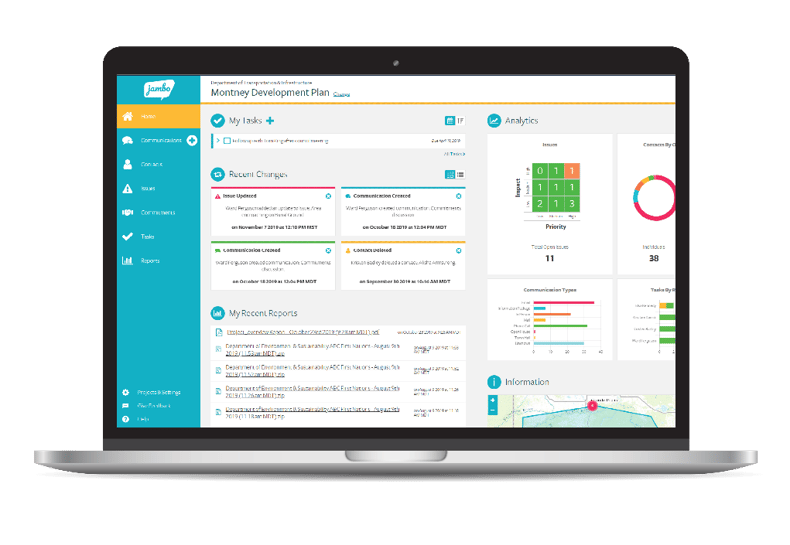
Who are your Stakeholders?
According to the IFC:
The process of compiling your list of stakeholders is called stakeholder identification and is an essential step in your stakeholder engagement journey.
The stakeholder identification process is where we determine:
- With whom we need to engage
- In what capacity
- In what type of way
Stakeholder-Mapping

The next step in your stakeholder engagement journey is organizing your stakeholders into their appropriate groups, based on the following classifications:
- Stakeholder Authority/Power
- Stakeholder Interest Level
Based on Mendelow's Power-Interest Matrix, this matrix helps you to identify your "key players" and helps you to decide which tactics are best for engaging with each category of stakeholders.
Stakeholder Tactics
Once you’ve identified, mapped and classified your stakeholders, your next step in the stakeholder analysis process is choosing your level of engagement for each stakeholder category.
The Spectrum of Public Participation developed by the International Association for Public Participation (IAP2), is an excellent tool for identifying which level of engagement (or participation) is best for your stakeholder categories.
The IAP2 Spectrum identifies five different levels of participation: inform, consult, involve, collaborate and empower.
For example, a low power/low interest stakeholder is not likely to influence or be concerned with your project and might only need to be informed (often with one-way communication).
Whereas your “key player” stakeholders (high power/ high interest) have a much greater potential to impact your project and, based on the IAP2 levels of engagement, may need to be consulted, involved, collaborated with and/or empowered, depending on the circumstance or your organization's vision for engagement.
Once you decide on your level of engagement, you’re ready to choose your specific engagement tactics.
Your tactics are simply your chosen method for how you’re going to engage (e.g. emailing stakeholders can be a great two-way communication method).
Why are your Stakeholders Important?
Why go through all this trouble for stakeholder engagement – especially if it’s not mandated?
Stakeholders have the power to positively or negatively impact your organization, so you need to ensure they buy into your projects.
A thoroughly researched and well-designed stakeholder engagement strategy can help your organization to mitigate any potential negative impacts, which is vital for the success of your projects, your strategies (like your ESG strategies) and your overall organization.
But stakeholder engagement is not just about risk management and building your reputation; it’s also about building relationships.
Building Relationships with your Stakeholders
Whether you’re dealing with a long-term project or a short-term project, building stakeholder relationships is an essential way to invest in the long-term success of your organization.
Stakeholder relationships are not “one and done." You could quickly encounter the same stakeholders again in the future, so building a good relationship with them early on can help to ensure the success of your current and future projects.
To ensure you're building strong relationships with your stakeholders your engagement needs to be meaningful. Check out our blog where we share tips you can easily implement into your strategy to make your stakeholder engagement more meaningful.
Relationships are Built on Trust
The foundation to successful relationships is trust, and to build trust, stakeholders need to feel like their issues and concerns are valued and heard.
For stakeholders to feel valued and heard, you need to remember what’s been previously said and what’s promised going forward.
Keeping a record of your stakeholder interactions, your stakeholder issues and stakeholder commitments can help ensure this is possible and in turn, allows stakeholders build trust in your organization.
But, trusting relationships cannot be maintained if there is no way to ensure that everyone is on the same page.
Using a cloud-based software to manage stakeholder engagement throughout the lifetime of the project keeps all your information in one easy-to-find place, which better helps you to maintain trust to build long-term, meaningful relationships with your stakeholders.
Software zur Einbindung von Stakeholdern
While using spreadsheets or even a CRM to manage your stakeholder information might seem like a effective choice, these options aren’t sustainable if you want to build future-focused, long-term stakeholder relationships.
Developing a repeatable and scalable process for stakeholder engagement management is an essential ingredient for building strong stakeholder relationships.
This process needs to include a collaborative database of stakeholder contact details as well as your interactions with these stakeholders. Choosing to create this database with a stakeholder engagement software is an easy and effective way to compile and store important information like:
- Contact details
- Communications
- Mittelbindungen
- Ausgaben
Stakeholder engagement software allows you to report on any of this information quickly and enables you to share it with your internal or external stakeholders, which is not just a time-saver but also a business best practice.
Say Hello to Jambo™
There are many stakeholder engagement management options available today, but software made specifically for stakeholder engagement is the best option if you’re looking for something straightforward and reliable.
Jambo is the fastest and easiest stakeholder engagement software on the market today. Created with input from private companies, governments, NGOs and engagement consultants, Jambo is a solution-focused software designed to meet your stakeholder engagement needs.
Jambo Allows Users to:
- Track and manage communications with every stakeholder
- Identify and log each unique stakeholder role
- Track and manage stakeholder issues
- View issues with an easy to understand timeline
- Track all project commitments right through to fulfillment
- Save time by compiling detailed reports quickly
- Visualize project plans by uploading project areas and mapping consultation locations and areas of concern
- Stay on track by assigning tasks to team members and monitoring task progress
- Collaborate by working with different departments or external contractors on the same project
- And much more--We're always adding new features and updates to help our users simplify the stakeholder management process!
Nächste Schritte
If you’re ready to take the next step towards excellent stakeholder engagement, book a 15-minute discovery call with a Jambo expert!
References
¹Stakeholder Engagement: A Good Practice Handbook for Companies Doing B. (Pg. 20). Retrieved from https://www.ifc.org/wps/wcm/connect/topics_ext_content/ifc_external_corporate_site/sustainability-at-ifc/publications/publications_handbook_stakeholderengagement__wci__1319577185063









